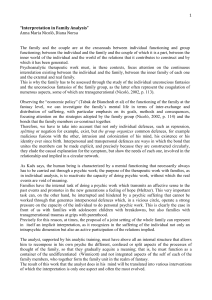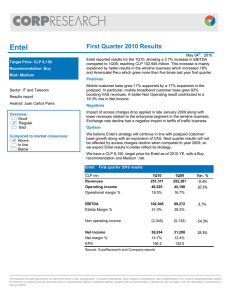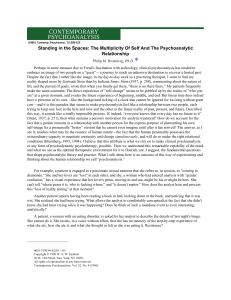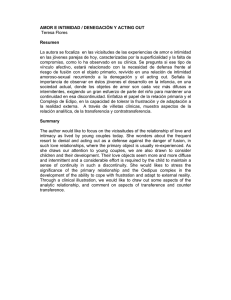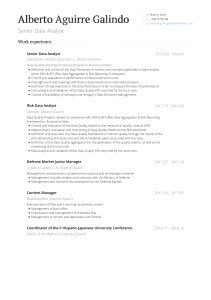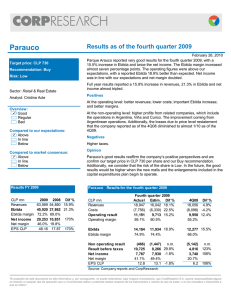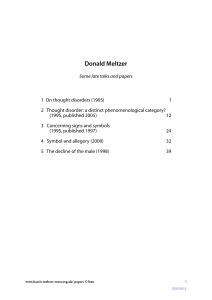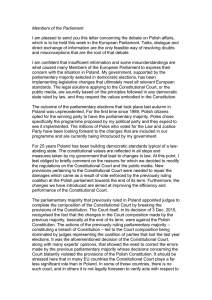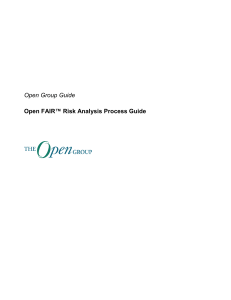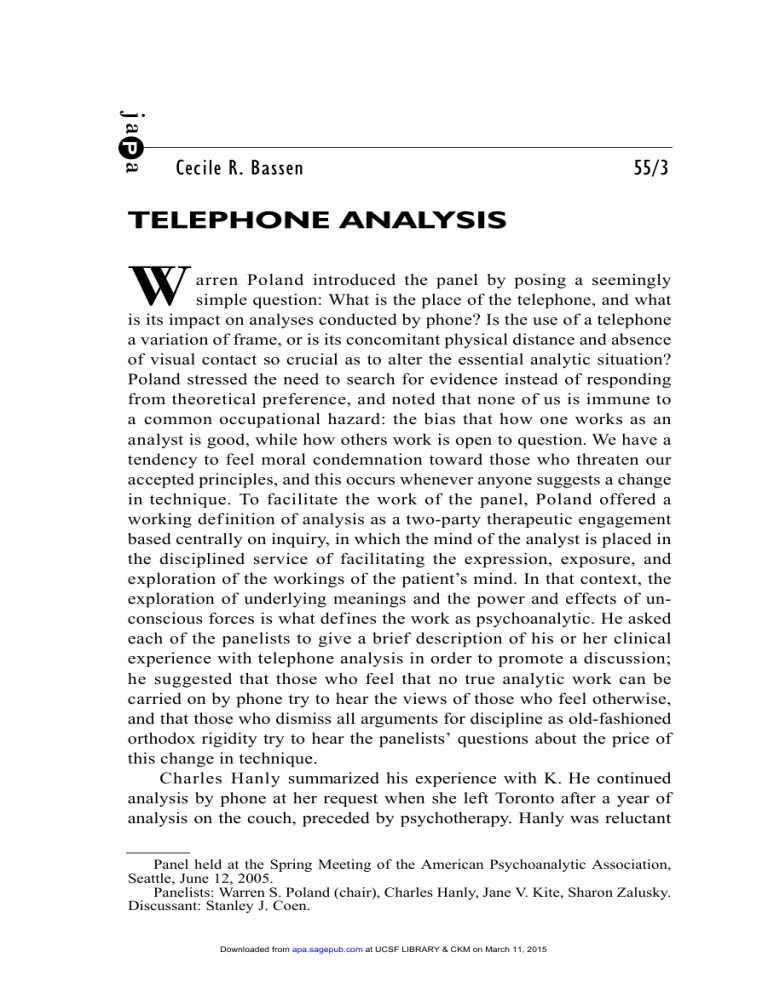
jap a Cecile R. Bassen 55/3 TELEPHONE ANALYSIS W arren Poland introduced the panel by posing a seemingly simple question: What is the place of the telephone, and what is its impact on analyses conducted by phone? Is the use of a telephone a variation of frame, or is its concomitant physical distance and absence of visual contact so crucial as to alter the essential analytic situation? Poland stressed the need to search for evidence instead of responding from theoretical preference, and noted that none of us is immune to a common occupational hazard: the bias that how one works as an analyst is good, while how others work is open to question. We have a tendency to feel moral condemnation toward those who threaten our accepted principles, and this occurs whenever anyone suggests a change in technique. To facilitate the work of the panel, Poland offered a working def inition of analysis as a two-party therapeutic engagement based centrally on inquiry, in which the mind of the analyst is placed in the disciplined service of facilitating the expression, exposure, and exploration of the workings of the patient’s mind. In that context, the exploration of underlying meanings and the power and effects of unconscious forces is what defines the work as psychoanalytic. He asked each of the panelists to give a brief description of his or her clinical experience with telephone analysis in order to promote a discussion; he suggested that those who feel that no true analytic work can be carried on by phone try to hear the views of those who feel otherwise, and that those who dismiss all arguments for discipline as old-fashioned orthodox rigidity try to hear the panelists’ questions about the price of this change in technique. Charles Hanly summarized his experience with K. He continued analysis by phone at her request when she left Toronto after a year of analysis on the couch, preceded by psychotherapy. Hanly was reluctant Panel held at the Spring Meeting of the American Psychoanalytic Association, Seattle, June 12, 2005. Panelists: Warren S. Poland (chair), Charles Hanly, Jane V. Kite, Sharon Zalusky. Discussant: Stanley J. Coen. Downloaded from apa.sagepub.com at UCSF LIBRARY & CKM on March 11, 2015 Pa n e l R e p o r t 1034 to attempt a phone analysis, but agreed because there were no analysts in the area K. relocated to. He described K. as successful but narcissistically vulnerable; she experienced panic attacks, which had diminished in the first year of analysis. Hanly was concerned about a loss of the holding function of the transference and of affect-stimulating proximity, and worried that use of the phone might provide a protective distance resulting in unanalyzable resistance, but his fears proved unfounded. The analysis continued at four times a week for three years until termination. Before her move, K.’s transference was primarily positive and idealizing; however, she felt affectively alienated from her father, and in the negative paternal transference experienced anxiety that her analyst found her boringly uninteresting. To Hanly’s surprise, the telephone facilitated the useful development of an erotic transference; in the absence of repeated visual contact, K. began to experience him as younger. Although before her move she feared being left alone by a lack of interest from Hanly, she now drew gratifying, soothing reassurance from the sound of his voice on the phone. The analysis of K.’s wish to be sensually attractive to Hanly led to a deep realization of her rivalry with her mother, which earlier she had been unable to recognize. Hanly’s acceptance of her request for phone analysis also led to a further working through of the paternal transference, resulting in deidealization, trust in her appropriate aggression on behalf of her needs, and a growth in self-confidence. Hanly concluded that the essential processes of free association, transference, understanding, and instinctual maturation need not be compromised in telephone analysis. He feels that the basic interpretive, responsive, holding, and witnessing functions can be sustained by the analyst without a need for modifications. The discussion that followed centered on patients’ ability to tolerate the analyst’s physical absence. Glen Gabbard noted that he found himself talking much more on the phone with a patient who could not tolerate silence, and wondered if Hanly might have talked more with this patient who experienced anxiety about being isolated and abandoned. Hanly replied that he had expected that K. might have difficulty tolerating both the couch and the phone, but he had not found this to be the case; however, he noted that he is a talkative analyst. Poland commented that Salman Akhtar has written about the issue of nearness and farness, and the analyst’s trying to keep the distance right. Patients in Poland’s office sometimes ask “Are you asleep?” but on the phone they ask “Are you there?” This suggests that the task of titrating the distance differs. Downloaded from apa.sagepub.com at UCSF LIBRARY & CKM on March 11, 2015 TELEPHONE ANALYSIS The value of meeting in person periodically was also raised. Michael Robbins commented that he has had extensive experience with phone work as a result of having relocated twice. He was astonished by the positive outcome with one patient, who he didn’t anticipate could tolerate the distance; Robbins found weeklong visits, two to three times a year, important in sustaining their relationship. Hanly noted that he met with K. on occasions when she visited Toronto. He had expected these sessions would be critically important, but did not find them so. However, they did help her become aware of the extent to which she was picturing him as younger than his age on the phone and erotizing the transference. Henry Smith noted that he too has experienced an intensification of erotic transference on the phone with a patient who in his office had been inhibited in talking about her erotic life and her experience of her body. Smith suggested that this may be a common, potentially useful, occurrence. Sharon Zalusky opened her presentation by saying that she believes that there are significant differences between telephone analysis and analysis that takes place in the office; she feels it is our responsibility to examine what we gain and what we lose in doing analysis by phone. Each participant in telephone analysis has to create and sustain a mental representation of the other in fantasy, because the physical presence of the other is not available. In doing so, a new analytic dyad is created and a new analytic process emerges, since the analyst in fantasy and the patient in fantasy are never the same as the two who have met in the office. Rather than being diluted, transference may in fact be intensified. Telephone analysis pushes Freud’s rationale for the use of the couch to its extreme limit: without the visual interference of the analyst, the transference ripens. However, this may be hidden from consciousness. Zalusky feels it is important to schedule occasional office visits, since transference distortions may not stand out until analyst and patient are reunited in person. She offered a vignette from a productive telephone analysis in which an important aspect of the transference remained hidden from both patient and analyst until they laid eyes on each other during an office visit. Her patient stated, “You look so different. You aren’t my analyst who’s with me on the telephone. In my mind you are so much older than you really are. My analyst is old and frumpy. You are neither.” They were able to go on to analyze the meaning of this transformation. Zalusky suggested that telephone analysis focuses, concretizes, and condenses such basic analytic issues Downloaded from apa.sagepub.com at UCSF LIBRARY & CKM on March 11, 2015 1035 Pa n e l R e p o r t 1036 as separation, loss, availability, and the needs of both patient and analyst, as well as the analytic frame and deviations from it. The use of the telephone for some may truly be a transitional space; hearing the voice of the other, repeatedly over time, while there and not there, helps create a mental representation of the caring other. Like all technology, it also blurs the boundaries between fantasies and action (Zalusky 2000). A member of the audience volunteered that she’s been in an extremely productive phone analysis for several years. In her own experience as a patient, the inherent connection between analyst and analysand is a critical sustaining factor. Although she never felt a connection with her first analyst, she established a good connection with her second analyst and found it easy to transition to phone work when she moved. She wondered if it was essential to establish that connection in the office first. Zalusky replied that there is no one way to begin or to conduct phone analysis; she has heard of telephone analyses that were productive even though analyst and patient never met in person. Poland noted that while some things are gained, we also need to attend to what is lost, including the analyst’s ability to attend to and make use of shifts in body posture, in ways that McLaughlin and Jacobs have described. In her presentation, Cecile Bassen emphasized the therapeutic value of analyzing patients’ fantasies about the possibility of continuing by phone whenever an analysis is disrupted by the patient’s or the analyst’s move, independent of the ultimate outcome. When Bassen told her patients that she was moving, several expressed interest in continuing by phone. She found that the wishes, feelings, fantasies, and fears behind each patient’s desire to continue, including any wish to avoid or deny the fact that she was ending the work as they had known it, were specific to his or her dynamics. Inquiring about why one patient did not raise the option of continuing by phone uncovered her fantasy that Bassen had decided to stop being an analyst, a fantasy related to the patient’s deep, painful feelings of abandonment by her mother after her parents’ divorce. This led to new material about the patient’s rejection of her mother’s attempt to maintain phone contact, and a significantly revised understanding of her long estrangement from her mother. Bassen noted that for children of divorce, continuing a relationship by phone carries meanings specific to their experience with noncustodial parents. Citing Poland’s working definition of analysis, Bassen suggested that exploring the underlying meanings of the analyst’s or Downloaded from apa.sagepub.com at UCSF LIBRARY & CKM on March 11, 2015 TELEPHONE ANALYSIS patient’s move and the patient’s wishes, fears, feelings, and fantasies about continuing by phone is consistent with analytic inquiry, rather than simply assuming that an analysis should either continue or end. Jane Kite presented her experience with a female patient who after three years of analysis, and as the result of a job change, began alternating between two weeks of analysis in the office and two weeks by phone. This experience led Kite to conclude that important shifts of feeling are catalyzed and sustained by physical presence in a way that may be impossible when only the auditory mode is available. Kite’s patient dislikes calling and routinely calls late. The patient has expressed concern that either of them could be psychically absent in the phone sessions, and dislikes Kite referring to the two of them as a “we,” especially on the phone, where she feels so separate. It as if the patient were saying, “We are only potentially a we when I’m here, and even that is a stretch.” Kite feels she is working too hard to engage her patient in phone sessions, as if they are constantly in danger of losing the connection. The patient feels peaceful being with her analyst in the office; it’s something she wants and values, which is aesthetically different from talking on the phone. In one session held in the office, her associations to the collapse of a building led her to articulate her feeling that the connection they’ve built together in person is wrecked on the phone, and the “point of being here” is lost. An erotic dream led to further associations that having her analyst to herself in the office felt like winning, while talking by phone felt like losing and being left out. Kite commented that her patient’s difficulty sustaining the sensory dimension of her perceptions in the analyst’s absence has made them aware of something that was not previously accessible, the degree to which the office setting functions as a maternal presence. The discussion that followed concerned what one can learn from the changes that occur when analysis switches from the office to the phone. Carol Levin recounted that exploring whether or not to continue by phone when one of her patients moved led to the uncovering of a fantasy about the analyst’s eternal availability that previously had not been accessible. Sue Von Baeyer described two different experiences with phone work: a patient who is intermittently psychotic has called her while sitting with her in her office, using the analyst’s voice in her ear to calm herself; the other patient provocatively describes being in unsafe situations when he calls for phone sessions. Henry Smith noted that when an intense transference and countertransference developed in a Downloaded from apa.sagepub.com at UCSF LIBRARY & CKM on March 11, 2015 1037 Pa n e l R e p o r t 1038 treatment that he began by phone, he found that neither he nor the patient wanted to meet in person; there can be an intense holding on to a mental representation or fantasy developed in absence, with a reluctance to allow this to be challenged by reality. Jane Kite commented that the patient she described remembered her erotic dream at the end of the second hour of the week, after reestablishing contact with the analyst and reclaiming her object representation. She suggested that the erotic transference may be overdetermined in phone work, if it emerges in part in an effort to hold on to the analyst. A member of the audience raised some practical questions, particularly the issue of who should call whom. Another, who had been in phone analysis, volunteered that she preferred to call her analyst; this allowed her to prepare for the session, just as she prepared when driving to her analyst’s office. Warren Poland confirmed that most phone analyses seem to be arranged that way. Stanley Coen, as discussant, repeated Poland’s concern about our tendency to make assumptions based on our biases and preferences, and noted that analytic couples will vary in their preferences. Coen emphasized the importance of keeping our eye on the ball—that is, keeping our focus on psychoanalytic understanding of psychical reality rather than on the physical reality of patient-analyst contact— and of subjecting listening and looking to our usual psychoanalytic inquiry instead of assuming we know what they mean. Coen felt that the presenters were drawing on early childhood models of the construction of object representations too concretely, and making too sharp a differentiation between listening and looking. He questioned the panelists’ assumptions that looking allows the patient to see transference distortions that can be challenged and corrected, and emphasized the value of wondering why patients’ perceptions and feelings change instead of assuming we know the answer. Coen felt that Kite’s conclusion that her patient was unable to maintain an object representation of her was premature. Noting that psychological incapacities in our patients often turn out to express conflicts in their feelings and needs, he speculated that Kite’s patient may dislike phone sessions because she craves her analyst’s physical presence and hates not being physically close to her. He feels that we are too concrete if we assume that patients’ reports of aloneness, emptiness, or absence represent actual loss of an essential object representation, rather than seeing them as defensive, rage-filled attacks on the missing object. What is missing, empty, Downloaded from apa.sagepub.com at UCSF LIBRARY & CKM on March 11, 2015 TELEPHONE ANALYSIS negative, lost, dead, destroyed, or nonexistent should not be taken at face value but needs to be examined for its vital meanings. Coen feels that we do better to try to help our patients, whatever the formal arrangements, rather than attribute too much to the telephone or to the consulting room. We risk losing our psychoanalytic perspective in overconcern with its formal arrangements. Hanly said he appreciated the emphasis that Coen placed on meaning. He noted that though philosophically we tend to emphasize the primacy of vision, and have a deeply rooted bias that “seeing is believing,” language is the medium of exchange in analysis and auditory functions are absolutely crucial because of the connection of language to meaning. Hanly felt the evidence presented at the panel made it clear that analysis can be carried out by telephone and the view that it cannot be is untenable. Zalusky responded that she was fundamentally in agreement with Coen. She feels that a great deal had changed in her patient as a result of analysis, which enabled the patient to see Zalusky differently when they met in person. However, even though telephone analysis can be extremely effective, it remains a therapeutic compromise, and we need to be sensitive to the fact that there are certain people for whom it is too depriving—it leaves them feeling dropped. For some patients, the absolute presence of the other may have the most mutative effect, especially at the beginning of treatment. Kite felt that some of the distinctions Coen drew were too pat. She feels that the difference her patient experiences between sessions in the office and sessions on the phone is not about looking, as much as what it is like to be in the presence of the other. Kite feels that her patient’s experience illustrates André Green’s comment that “the psyche is activated by the object’s proximity” (1975). Bassen emphasized the degree to which individual differences in dynamics affect the meaning of conducting analysis by phone. She wondered whether Hanly’s agreeing to K.’s request to continue by phone despite his reluctance led to her feeling special, facilitating the development of the erotic transference. In contrast, it might be particularly difficult for someone like Kite’s patient, who was struggling with whether she could experience the analytic dyad as a “we,” to tolerate phone analysis. These individual nuances are likely to affect the patient’s ability to hold the analyst as an internalized object in the absence of physical proximity. Downloaded from apa.sagepub.com at UCSF LIBRARY & CKM on March 11, 2015 1039 Pa n e l R e p o r t 1040 Poland commented on the value of differentiating psychic from physical space. Michael Robbins noted that he has had one psychotic patient tape their sessions, and no one has been able to discern the difference when he plays tapes of face-to-face and phone sessions with this patient. He does insist on establishing a face-to-face relationship before beginning phone work, and on having some intermittent contact; this allows him to attend to the importance of the contrasting experience, whether it has to do with fantasy or the meanings of physical presence. However, Poland noted that with some patients it is simply not possible to meet in person at any point in the treatment. Coen volunteered his experience with patients in psychotherapy who use the phone to establish a safe distance when they feel things are getting too intense and they are afraid of being overstimulated; later they are able to come into the office and talk about it. Robbins uses a headset when he is on the phone and is aware of being freer to move around; he suggested that it is worth wondering about the implications of what we allow ourselves to do in phone sessions and of what patients do. Hanly commented on the issue of unwitting boundary violations; he called a schizophrenic patient when she missed a session in an effort to provide a holding environment, and she felt he was involved in a sexual situation with her because she was naked. Smith suggested that comparing work on the phone to work in the of f ice provides an opportunity to learn about the nature of psychic life and motoric discharge, including what aspects of talking on the phone may stimulate the erotic transference (such as having the analyst’s voice in one’s ear, the association to phone sex, and the lack of physical constraint). The analyst’s countertransference was also discussed. Poland volunteered that the discussion led him to realize that his countertransference has affected the way he begins telephone analysis. He explicitly states that he doesn’t know if it will work or not and that each party has an obligation to speak up if it is not working. He had never stopped to question his singling out phone analysis in this way, even though he has the same feeling about beginning every analysis, or to think about the pressures and burdens his comments introduce. Ann De Lancey commented that a marked change occurred in a child analysis when it became a phone analysis due to the family’s move: the pressure for object removal the child was experiencing in the office disappeared. However, when she was asked to inform the child Downloaded from apa.sagepub.com at UCSF LIBRARY & CKM on March 11, 2015 TELEPHONE ANALYSIS of a parent’s suicide, De Lancey wanted so much to have the child in her presence and experienced the physical distance as excruciating. Kite noted that knowing she would see a child patient the next day made a similar experience bearable for her. She feels it is important to recognize that phone work can be chaotic since you never know what will impinge from the side of the patient; this can be difficult to contain and metabolize. Sherwood Waldron brought the discussion back to the emphasis Coen placed on keeping our eye on what we’re trying to accomplish. He sees the analyst as a well-informed guide accompanying his patient on a journey, who is not necessarily well informed about the terrain. Child analysts expect the journey to involve actions as well as words, and are accustomed to letting the child define the communicative path. This happens with adults in a less obvious way. We never know what direction the journey will take, or what will prove to be important. If we are willing to let our technique be formed by our patients and the circumstances with a reasonable degree of comfort, it helps us keep our eye on the ball. Poland concurred with the value of following the patient’s lead, commenting that Waldron had provided a beautiful description of analysis. Coen noted that struggling in a rigid way about what works and what doesn’t, or having a set idea of how it should be, gets in the patient’s way. As the panel concluded, Poland noted that we need to acknowledge that many analysts are conducting telephone analyses and begin to examine all these issues. Both Hanly and Coen emphasized the reality that at times, when either analyst or patient is in a remote area, there is no other way to provide treatment. REFERENCES G REEN , A. (1975). The analyst, symbolization and absence in the analytic setting. International Journal of Psychoanalysis 56:1–22. Z ALUSKY, S. (2000). Infertility in the age of technology. Journal of the American Psychoanalytic Association 48:1541–1562. 4033 East Madison Street, Suite 202 Seattle, WA 98112 E-mail: [email protected] Downloaded from apa.sagepub.com at UCSF LIBRARY & CKM on March 11, 2015 1041
